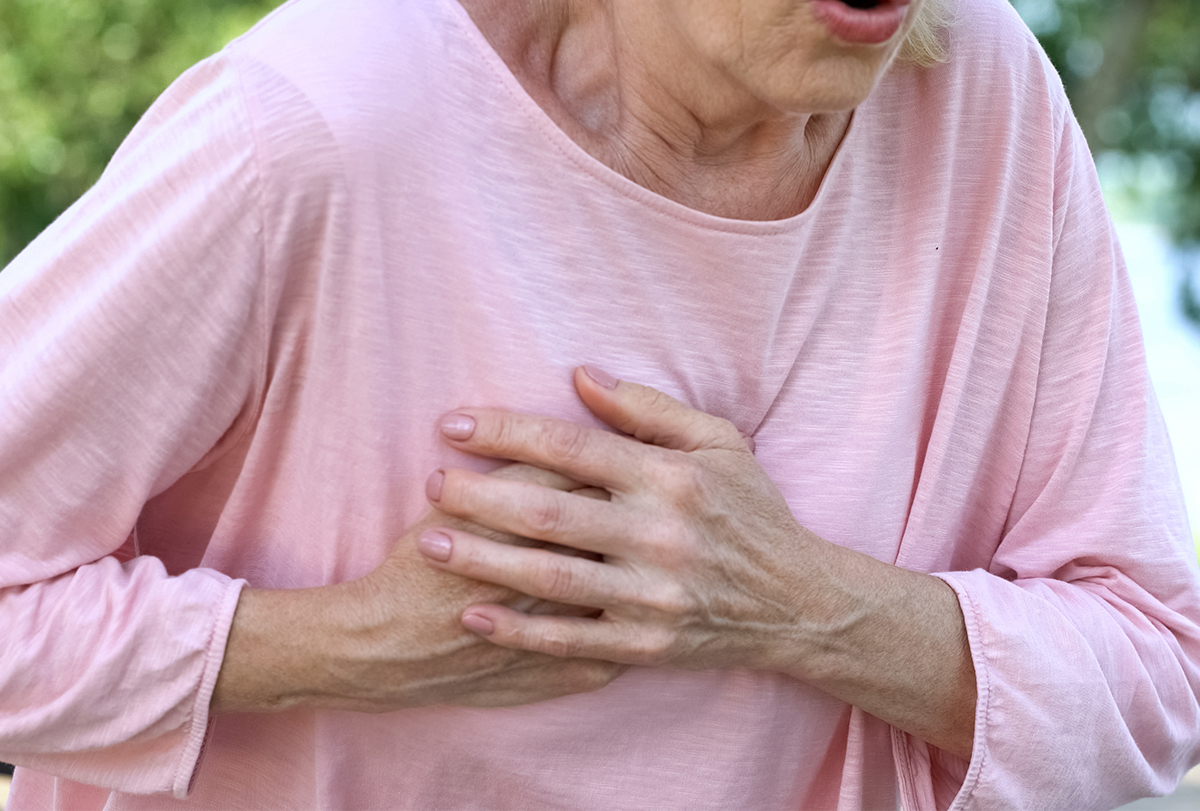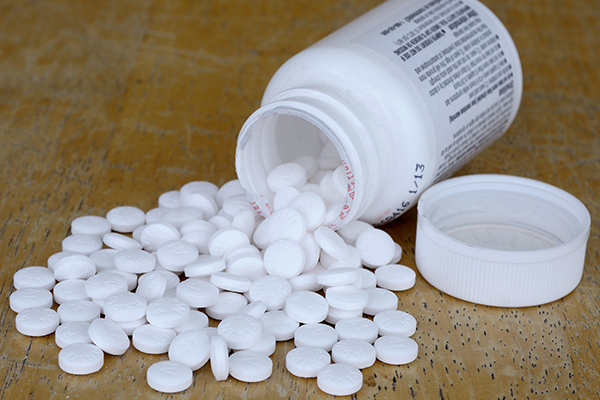In this article:
Chest pain is defined as a sense of discomfort in the chest area, which can stem from a variety of underlying problems that may or may not be related to the heart.

While it’s true that heart attacks typically present with chest pain as their main symptom, not every chest pain is a sign of a heart attack. Some people assume every chest pain to be a sign of a heart attack and start to panic only to find later that it was triggered by something else.
Causes of Chest Pain
Chest pain can occur due to several causes. In fact, every tissue that composes the chest wall can be potentially responsible for chest pain.
Some common causes of chest pain include:
- Shingles
- Sore muscles in the chest wall
- Fractured ribs
- Other problems with the rib, such as arthritis involving the rib cage joints or inflammation of the cartilaginous part of the rib cage known as costochondritis
- Inflammation in the outer layer of the heart (pericarditis) or lungs (pleurisy) (1)
- Blockages in the arteries of the heart (coronary artery disease), which can cause angina on exertion, a kind of pain that worsens on exertion and is relieved with rest (2)
Characteristic Symptoms of Chest Pain
Chest pain generally feels like pressure or heaviness in the central chest area, epigastric area, or left/right side of the chest wall.
The sensation can be felt in many forms, from a sharp stab to a dull ache to a burning, sharp, shooting pain that travels up the neck, into the jaw, and then back or down one or both the arms.
Moreover, the chest pain may be accompanied by:
- High or low blood pressure
- High or low heart rate
- Increased respiratory rate
- Diaphoresis or profuse sweating
First Aid for Chest Pain

If you experience severe chest pain with serious features, as explained above, chewing one 325 mg tablet of aspirin may help. If, however, the pain remains persistent or worsens after taking the aspirin, contact your doctor immediately.
Also, call Emergency Medical Services (EMS) for prompt evaluation and medical care before the condition becomes any more serious.
Distinguishing Between a Heart Attack and Chest Pain
Heart attacks can manifest differently in different people. In the absence of any standard symptoms, it can be very difficult to distinguish a heart attack from regular chest pain.
In fact, a heart attack may manifest as classic chest pain in some people. Others may have additional symptoms, including jaw pain, back pain, breathlessness, extreme fatigue, and nausea.
While chest pain can occur due to several reasons, a heart attack is one serious type of chest pain or pressure that happens due to blockage in one of the arteries of the heart.
A heart attack is an extremely serious condition that, if not managed promptly by trained medical personnel, can result in rapid deterioration and can potentially induce heart failure or sudden cardiac death. (3)
How to Know if Your Chest Pain Is Serious
Any chest pain that is out of proportion to the possible cause is concerning.
People who experience chest pain or pressure along with severe shortness of breath, low blood pressure, elevated heart rate, dizziness or passing out (syncope), and left arm or jaw pain are at increased risk of having coronary artery disease.
Those with a blood clot in the lung artery (pulmonary embolism) usually experience chest pain or pressure along with hypoxia or low blood oxygen level.
The simultaneous occurrence of these signs and symptoms can point to a serious underlying cause and therefore warrants prompt medical attention.
How Do You Know if Chest Pain Is Heart Related?
Chest pain may be related to the heart if it is triggered or aggravated by exertion or physical activity. Thus, chest pain or pressure stemming from an arterial blockage in the heart worsens with exertion and is relieved with rest.
On the contrary, chest pain due to a heart attack usually happens at rest and can get worse with time. (4)
Signs and Symptoms of a Heart Attack
Heart attacks manifest in various ways. The most common presentation of a heart attack is chest pain or pressure associated with nausea or vomiting, profuse sweating, and shortness of breath. (5)
Patients can also experience palpitations and irregular heartbeats. For most patients, it is the worst chest pain they have ever experienced.
In addition, some patients feel atypical symptoms such as abdominal pain, back pain, nausea, and vomiting, which are mostly observed in women and older patients.
First Aid for a Heart Attack
The first aid for a heart attack is to chew a 325 mg tablet of aspirin for immediate relief. This also buys you some time to get professional help.
Meanwhile, you must immediately call an ambulance to be taken to the nearest emergency center for proper evaluation and further management if the pain persists.
Lifestyle Changes for Better Cardiovascular Health

To avoid chest pain from heart-related conditions, you should follow a healthy lifestyle that consists of good sleep hygiene, a scheduled exercise regimen consisting of an aerobic activity, and a wholesome, well-balanced diet.
In addition, people with risk factors for heart disease, including hypertension (increased blood pressure), hyperlipidemia (increased cholesterol levels), diabetes mellitus, smoking, and a strong family history of heart disease, should do everything they can to manage these risk factors to avoid any cardiovascular emergencies in the future.
Final Word
It is only after a proper diagnosis that you can determine the source of your chest discomfort, but you may not be able to afford this delay in some serious cases.
Thus, it is important to understand the subtle difference between chest pain and a heart attack and learn about the signs that can alert you to their seriousness in order to pursue prompt treatment.
First aid can be given at home in either of the cases while you wait for medical assistance to arrive. Once you reach the hospital or clinic, the doctor will conduct the necessary tests to identify the root of the problem and treat it accordingly.
- Was this article helpful?
- YES, THANKS!NOT REALLY


